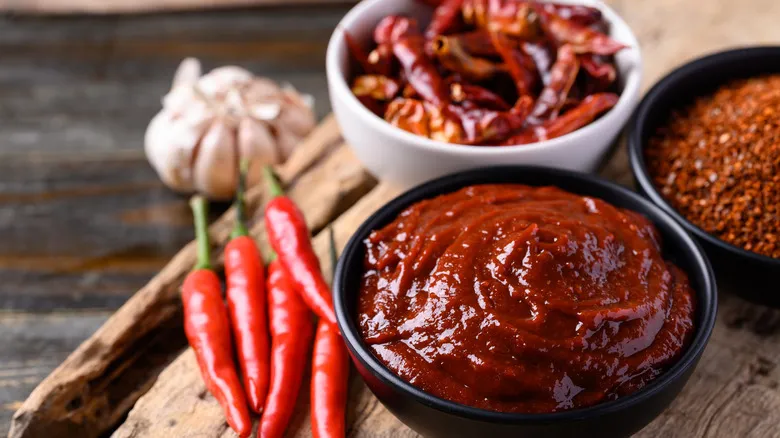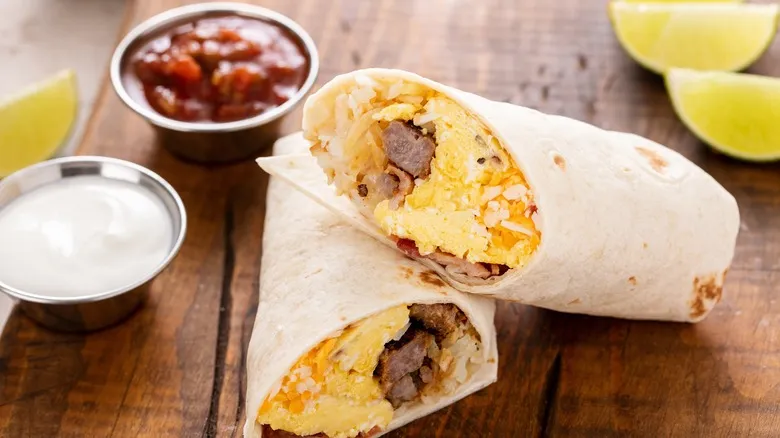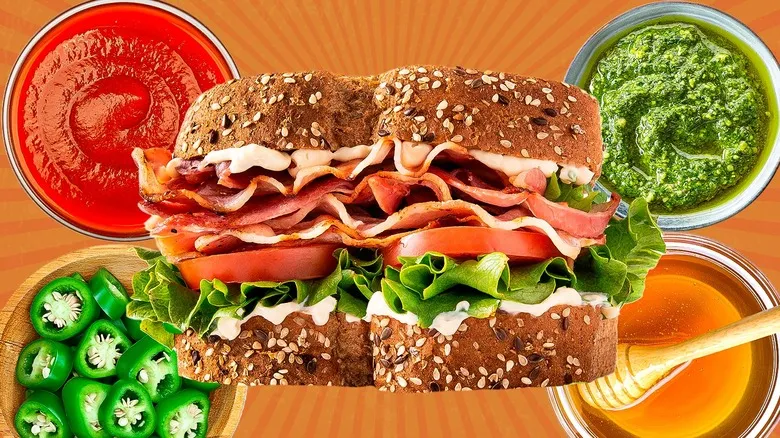Why gochujang works as a burrito ingredient

Gochujang is a red chili paste that has its roots in Korea, dating back centuries, and serves as a fundamental component in meat marinades for traditional dishes such as bulgogi and bibimbap. Unlike many hot sauces that consist of powdered or crushed chili peppers mixed with vinegar or oil, gochujang stands apart. Its main ingredients include red pepper flakes or powder, meju (fermented soybean), and glutinous rice powder, along with salt and various seasonings.
The flavor profile of the paste can vary based on the ratios of its ingredients and the duration of fermentation, resulting in a taste that can be more spicy, savory/umami, or sweet. This intricate flavor complexity pairs wonderfully with a variety of foods. For instance, it is a crucial ingredient in celebrity chef David Chang's beloved canned tuna (Dongwon Tuna With Hot Pepper Sauce). You can incorporate it into a roux to significantly enhance mac and cheese. When added to breakfast burritos, the spice balances the richness of the eggs and meat, while its earthy sweetness complements potatoes. The umami flavors work well with bacon or sausage, providing a delightful contrast to the mild flour tortilla. Gochujang truly transforms a simple breakfast into a dish with a depth of flavor reminiscent of chilaquiles or huevos rancheros.
How to use gochujang in breakfast burritos

While there are many gochujang chile sauces available, it is most often found in a moderately thick paste, similar in texture to canned tomato paste or harissa. Therefore, it's best to think of it as an ingredient rather than a condiment (it doesn't work particularly well to simply add a dollop on top of a burrito and take a bite). The simplest way to use the paste is to spread it along the tortilla as you assemble the burrito. You only need a small amount, about a teaspoon or less, to fully appreciate its flavor.
Another option is to blend it into your eggs, whether you're scrambling them or cooking them in another way. Again, aim for about a teaspoon or less, adjusting to your taste, and ensure it’s thoroughly mixed in. This technique helps distribute the sauce evenly throughout the eggs, enhancing every bite of the burrito. (If you have some extra time, you could create a marinade for proteins, which is a common way to season stews in Korean cuisine.)
If you're looking for a sauce, try combining gochujang with hot sauce, Sriracha, mayonnaise, or other condiments. This not only allows you to create a drizzleable, dippable sauce, but also lets you customize it to your liking. A touch of gochujang can elevate your favorite spicy ketchup, while mixing it with mayo results in a spicy, creamy sauce that’s perfect for breakfast burritos, burgers, pizza, fries, or tuna sandwiches.
Recommended

The Condiment You Desperately Need For Great Baked Chicken

The Kitchen Tool Hack For Perfect Uniform Potato Wedges Every Single Time

13 Underrated Condiments Your Sandwiches Have Been Craving

The Cooking Oil Trick To Form Hamburgers Without Getting Your Hands Sticky
Next up

